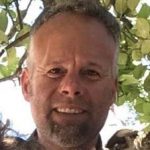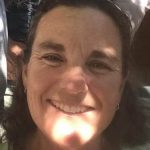MUST SEE: LA RUTA DEL CAFE in CHIAPAS MEXICO
MUST SEE: LA RUTA DEL CAFE 🇲🇽 CHIAPAS MEXICO

One cold January morning in the late 1800's, Arthur Erich Edelmann, his wife Doris, and seven other colleagues set sail from Hamburg, Germany, all from Perleberg, a small town an hour and a half from Berlin. Erich had a coffee machinery factory in his hometown, owned by his family, which was facing financial problems when they received and invitation from the Mexican government to bring their machinery and their expertise to the fertile region of Chiapas, Mexico. It would be amazing to know what they felt when they read that letter of invitation? That is a story that we do not know and perhaps we never will. What would you have thought to go from the deeply familiar to a place that seemed like a different world. Would you take a risk, abandon your business, your city, your people, your country, your language to start from scratch in a place so far away, so different in culture, language, nature and climate?

Erich traveled for three weeks across the Atlantic until he arrived at the Port of Veracruz, where he took a horse-driven cart with his people to go to Soconusco, Chiapas to the wild and untouched lands that he and his family would soon call home.
Before arriving in Mexico, we suppose that Erich had to have read all the information available about Chiapas, about Mexico and its culture, its people, language, nature, its history. However, there was nothing that could have prepared him for the intensity of his new life.
Erich, Doris and their people arrived in Huixtla, a small village with some houses built in adobe and palm trees, inhabited by friendly indigenous families who gave them the mules and human capital necessary to reach their final destination. From there, it took them another 8 hours to be able to transport along the newly created dirt roads, which looked like tunnels through the dense jungle. On their way they could observe the Tacaná, a volcano whose eruptions transformed the land around it into a fertile paradise.

With the help of workers from San Cristóbal, San Juan Chamula and Guatemala, Erich and his team of architects and engineers began to harmonize the land, build the first houses for the workers, the mill, roads. Erich and Doris lived for 11 years in one of these simple houses, couldn’t afford a bigger house, not yet. The priority was to prepare the land, build all the necessary infrastructure to work, keep people working, provide money and work, houses and food. The priority was its people and the priority was coffee.
They put a lot of work into investing in this long-term project so far from home, a lot of determination and hope, a great risk and a gamble. All that work, all those years, until finally: the first harvest and the start of Finca Hamburgo.

This exemplary coffee Resort Located in the Sierra Madre of Chiapas with More than 130 years of history and culminates as a cultural and extremely worthwhile experience
Argovia is a partner and initiator of the Coffee route in Chiapas, with cabins, outdoor pool, Spa, Yoga area, Restaurant, Bar, Event areas and tours.

Chiapas is the southernmost state in Mexico, and it borders the states of Oaxaca to the west, Veracruz to the northwest, and Tabasco to the north, and borders Guatemala to the east and southeast. Chiapas has a significant coastline on the Pacific Ocean.
The lowland, tall perennial rainforest has been almost completely cleared to allow agriculture and ranching. Rainfall decreases moving towards the Pacific Ocean, but it is still abundant enough to allow the farming of bananas, coffee and many other tropical crops near Tapachula. On the several parallel sierras or mountain ranges running along the center of Chiapas, the climate can be quite moderate and foggy, allowing the development of cloud forests like those of Reserva de la Biosfera El Triunfo, home to a handful of horned guans, resplendent quetzals, and azure-rumped tanagers.


How to get Argovia?
To get to the Finca you have to take 8th Street north (reference: intersection with 17th Street west) located on the border of the city, which will take you north, right at the end will become Road to New Germany. 40 minutes of road without changing your way to find the 39km, you´ll find a signal that says “Argovia 5 minutes” turn your way to the right. You will continue by Finca Eduviges paved road better known as New Germany and only 5 minutes more you’ll be in Argovia. We guarantee that any vehicle from compact to mini sedans can access our Finca with no trouble.

Miguel and Tony lead fabulous, custom tours from Marina Chiapas.

SAFETY: THE DREADED DIESEL BUG
THE DREADED DIESEL BUG

|
ABOUT THE DIESEL BUG |
|
Usually, fuel can stay in a usable condition under storage for up to a year, after which it may begin to develop sediments. Vessel in the the tropics are wise check any stored diesel before putting it into action. Fuel in tanks deteriorates over time as it reacts with the oxygen in the air. Water in a fuel tank harbors bacteria and fungi that feed on diesel. Water can form in fuel tanks due to condensation from the tank heating and cooling over a 24 hour period. This creates the perfect petri dish for bacteria and fungi. One of the most common microorganisms that can grow under these circumstances is the diesel bug. The diesel bug deteriorates your fuel and creates a sludge capable of damaging your engine. Once you get underway the sediments slosh around and the fuel pickup hose quickly gets clogged. The bug clogs the fuel system. |

ACTUAL CAUSES
- Humidity in the air
- Fuel tank condensation
- Fuel tank insulation
- Air leak on seals on fuel tank filler cap inc damaged o-rings
- Poor fuel station storage quality
- Low volume of sales at fuel station

REMEDIES
Once you have the bug ...
1) Separate the water from the diesel
2) Shock and kill the diesel bug with biocides
3) Remove sediments from the bottom of your tank

To Prevent the bug
1) Fill the tank
2) Use a fuel filter to take on fuel from the pump
3) Use Enzymes to prevent the bug from forming in the first place
*For ongoing maintenance. Fuel Doctor, Soltron and Star Tron have result oriented enzyme formulations.
A full rundown on tests and solution lives here >>

SAILING NOTES FROM THE SOUTH PACIFIC FOR OCEAN VOYAGERS
Sailing Notes from the South Pacific for Ocean Voyagers










SY WHIRLWIND 🇺🇸 Maurisa, Mike, Russell & Josea – Alajuela 48’




EXPANDING POSSE PERKS: YACHT PORT CARTAGENA, SPAIN💰 Save real money at Marinas with discounts
ANNOUNCING: NEW MARINAS SIGNING ON WITH THE OCEAN POSSE
EXPANDING POSSE PERK:💰 Save real money at Marinas with discounts


SV QUESO GRANDE II and Captain Dietmar kicked off the first Ocean Posse event in Yacht Port Cartagena, Spain!
Dietmar says: Thank you Sherri for all the event support and promotion to the international cruisers who came! AND THANK YOU LANCE FOR SOME SUCCULENT RIBS !!!
Sherri from SV QUESO GRANDE II says: Great fun, great cruisers, and great grilled meat by my darling husband Lance.

Currently, the Ocean Posse has ????some number of marinas in ????some number of countries bla bla bla. This represents great savings bla bla bla




